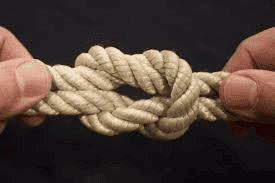Knot-Tying & Rope Handling
The ability to tie knots is an essential skill for seamanship. It’s important for everything, from securing ships to handling cargo. A good knot can make the difference between safety at sea and disaster. The bowline knot is a staple in a sailor’s knot-tying arsenal. It’s known for its strength, ease of untying and versatility.
Rope handling is just as important as knotting. Understanding the rope types used on ships, their properties and best practices for maintaining and caring for them is important. Rope handling skills are essential for completing tasks efficiently and safely.
Navigation Basics
Navigation is the art of safely guiding your vessel from one place to another. Sailing skills include the use of compasses, charts and other tools that are used to chart a vessel’s course and determine its position. Understanding tide calculations, current forecasts, and coastal navigation basics will help sailors navigate in a variety of marine environments. For information on a RYA Day Skipper Course, visit https://www.solentboattraining.co.uk/rya-sailing-courses/rya-day-skipper-practical-sailing
Weather Forecasting
Forecasting and understanding weather are essential skills for sailors. They can anticipate and react to weather conditions which may have a significant impact on maritime operations. Knowing the basics of weather patterns, clouds, and barometric pressure readings helps sailors make informed decisions regarding route planning, safety measures, and speed adjustments. A sailor can improve their ability to predict weather changes by becoming familiar with tools such as marine weather services, satellite imagery and weather maps.
Safety Procedures for Emergency Response
Seamanship is based on safety procedures and emergency response abilities. This ensures that sailors are able to effectively manage risks and incidents at sea. Every crew member must be familiar with safety protocols. This includes man-overboard, fire prevention, response and abandon ship drills. It is important to be familiar with safety equipment on board the vessel, including life jackets and flares.


